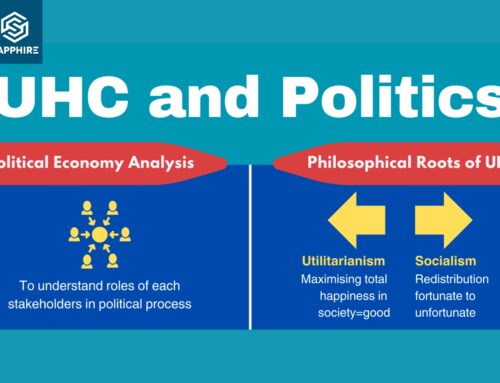We sat down with the David Kim (DK), Rachel Bacon (RB) and Peter Neumann (PN)[1] who are the authors of Chapter 6 titled Assessing the Transferability of Economic Evaluations: A Decision Framework, to get a sneak peak into Chapter 6.
Q : Thank you for joining us today, can you first tell us why we need to think about transferability?
DK: Economic evaluations typically reflect the context and health systems of a particular country or region. When decision-makers seek to apply economic evidence generated elsewhere to the local setting, they need to consider potentially important differences between settings. The process of evaluating the extent to which particular study findings can be applied to another setting or context is called “Transferability Assessment.”
RB: Cost-effectiveness is a highly effective tool within the decision-maker’s toolkit to help guide and inform health care prioritization. However, generating original cost-effectiveness for each decision-maker’s particular setting may be unfeasible for a variety of reasons (e.g., limited time to conduct an original study, limited funds to sponsor the study, etc.). Because transferability is an exercise in utilizing available evidence, any opportunity to employ it and use high-quality and relevant cost-effectiveness evidence is a time, effort, and money-saving advantage.
PN: Health officials in low- and middle- income countries (LMICs) can benefit from economic evaluation for priority settings and reimbursement decisions, but they often lack original studies relevant to their local settings. Thus, the transferability of results across countries and settings is important.
Q: So what are the main factors that local decision-makers should take into consideration when they want to use external evidence?
DK: Key factors for consideration include epidemiology, demography, relative prices, capacities of health systems, political and cultural conditions, affordability, and others. It is also important to consider whether the study under consideration is a suitable candidate for the transferability assessment (i.e., quality check).
RB: Our transferability checklist is a novel approach that guides decision-makers through various components of available evidence, helping them to screen components of a study and ensure they ultimately chose evidence that is the best fit for their own purposes. There is no one-size-fits-all approach to this process. As a hypothetical example, some decision-makers and program managers may first prioritize study screening by deciding whether or not the target intervention is logistically feasible to employ in their own setting; for other decision-makers, perhaps study perspective or payment structure of the available study has to match their own preferences above all else. Before proceeding with a transferability exercise, I recommend that program managers and decision-makers set baseline preferences to consider which elements of a cost-effectiveness study are deal-breakers (if not a match, evidence cannot be used), or more flexible to consider (available evidence can be used with caution).
PN: Key factors for consideration in using external economic evidence, include what differences exist across jurisdictions in population characteristics, disease epidemiology, and absolute and relative prices. Local decision makers should also consider the overall quality of the original study.
Q: Finally, what is the key take-home message from this chapter?
DK: Identifying locally-relevant Best or Wasted Buys often requires adapting economic evaluations conducted in one country to local settings elsewhere. The process is challenging and requires careful examinations of data inputs, local data availability and other contextual factors relevant to specific settings.
RB: When original cost-effectiveness evidence is not available in a decision-maker or program manager’s setting, transferability can help bridge the gap in knowledge. In global health, knowledge sharing and utilizing available evidence is highly encouraged – and transferability is a smart technique to employ readily available evidence and inform investments in best-case scenarios that help achieve health for all.
PN: Local decision makers may be able to use economic evidence generated elsewhere, but there is a need to the relevance and quality of the external studies before that evidence is considered “transferable.”
The NCD Prevention: Best Buys, Wasted Buys and Contestable Buys book will be launched on 12th December 2019 (UHC Day). To find out more about the project please visit https://www.buyitbestncd.health/ and stay tuned for more insights with book authors, editors, and reviewers in the coming weeks.
[1] All from Tufts Medical Center



